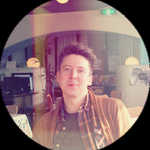

On the way to work I was reminded of Osaka-jo and the blue tarpaulins of the homeless.
October 1st, 2013, 2pm
It was 16°C with few clouds. There was moderate breeze.
I lived in Daikokucho, a short walk from Nanba and the entertainment district of Shinsaibashi, one subway stop north of gangland Osaka, den of supposed iniquity, home to Eastern European ‘hostesses’, junkies and one of Japan’s largest homeless communities.
My students urged me to look for a safer neighbourhood. I would smile and shrug at their earnest appeals, secretly enjoy the idea of being so close to the bad side of things. I never felt threatened, or was threatened. Didn’t even think about it. But I wasn’t from there. That world really was another universe, parallel to my Gaijin existence of teaching english, karaoke, and expat bars, where you didn’t even begin to scratch the surface of everyday Japanese life, let alone its underworld.
Maybe I liked where I lived because, even though I wasn’t a part of it, it felt like there was a community there. A community is what I found at Osaka-jo. Well maintained and impressive structures, tarps lashed over the top, held down my dead batteries to which they were tied. Men, always men, never women, in groups sitting round mini gas, or alcohol-burning, stoves. So orderly. I took photos. This is what you do when you’re a tourist in another land, assume the role of peeping-tom.
After a while I began to see the ubiquitous blue tarp everywhere I went: in doorways on Yotsubashi-suji, Tennoji Station, sometimes near Ashiharabashi Station where one or two structures would be pushed up against the fence that ran beside the Loop Line. Later, years after I had departed Japan, I discovered I had lived not very far away from Kamagasaki - Slum Town.
Always the tarp.
It didn’t define my time in Osaka, but it had an effect on me, like Japan itself, which gets under your skin, stamps it uniqueness on you, won’t leave you alone. The mama-charis, the humid-beyond-belief summers, the chorus of irasshaimases when you enter or leave a shop or restaurant, the way subway train doors line up perfectly to two white lines on a platform, the food, Den Den Town, the way everything just works.
But that can’t be the way of things, right?
Evidence suggests that’s not the case, the world over, cities flush or not flush with blue tarps.
Every thing doesn’t just work.
Filed Under
Other moments in Wellington
-
It is often in the small and simple things where we find the answer to who we are :)
in Wellington, New Zealand -
Home is where the heart is!
in Wellington, New Zealand -
Autumn breeze clearing the mind
in Wellington, New Zealand -
To live is not this!
in Wellington, New Zealand -
writing, Prose
He was happy he'd decided to go
in Wellington, New Zealand -
Held back
I'm stuck here in a society that doesn't let me be where I need to be. Held back by the people who birthed me, by the people who learned me, by the people who will bury me when I have lived my shitty, cynical life. I have three options, One which would bring joy to me that I have not seen in a long time, one which would give me the opportunity for me to be possibly the happiest ever happy in the future, and one which would break me apart. Most likely I will have to choose the latter. The one that will break me. The society that we have created will break me, just like it has broken you without you even knowing. We sit behind our computers, reading other peoples stories because we have none to tell. I am not free,if I go out and find a drink, I get arrested. If I go to the orchard nearby, I get arrested. If I try and build a house on some land that I think looks suitable to raise my family in, I get arrested. Is this how life is meant to be? Is this how we started? Is this how we will end? This may not make complete sense, but that's because it's come right from my heart. I hate western society.
in Wellington, New Zealand -
Into the wild
Good luck living in a world like this. I'm off to Alaska.
in Wellington, New Zealand -
writing, Prose
The farmer's beads
in Wellington, New Zealand -
Memories
The weight of a memory
in Wellington, New Zealand









